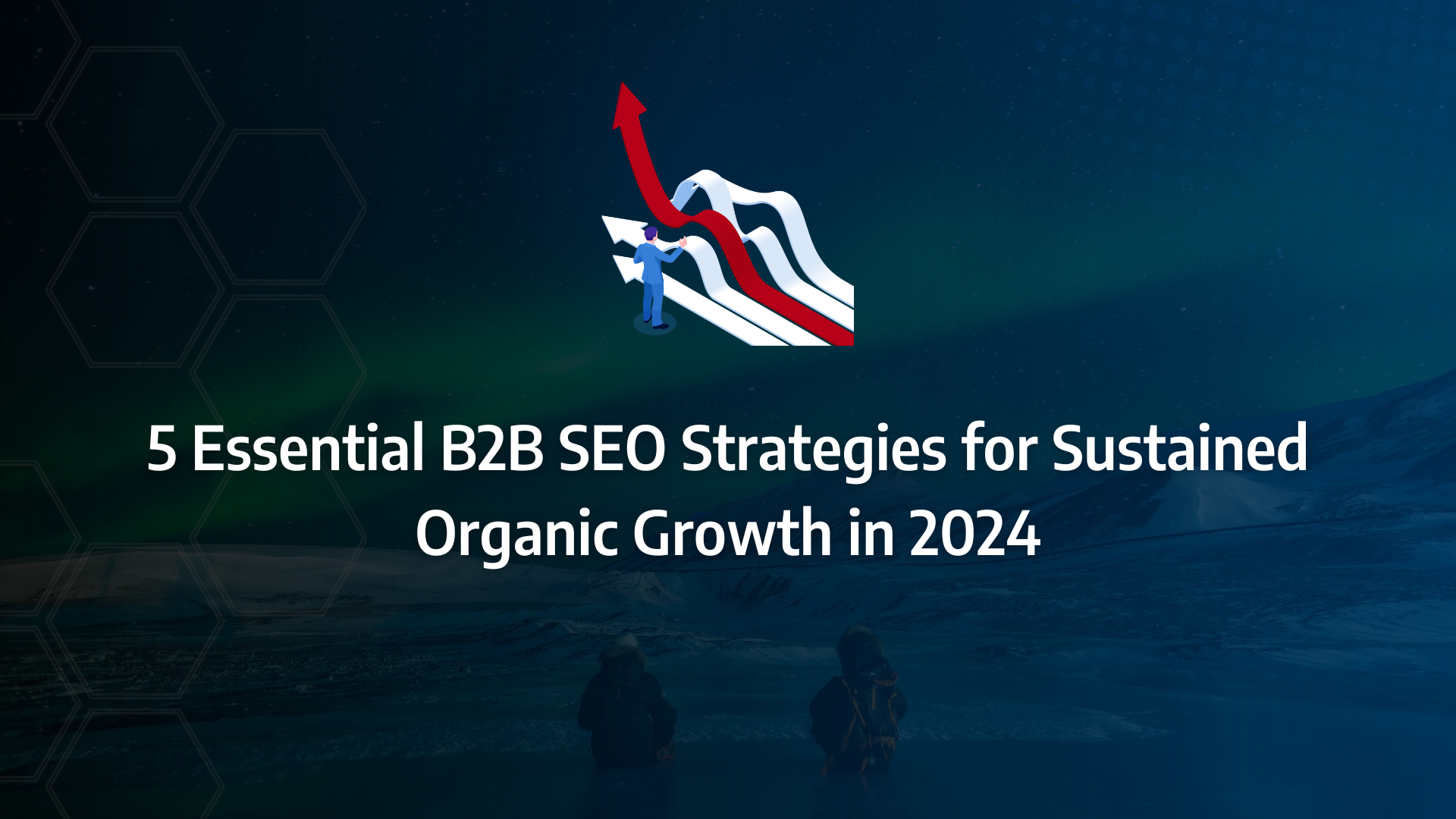With search engine algorithms evolving constantly, how do you ensure your business ranks where it matters most? That’s where a strong B2B SEO strategy comes in. Companies with optimised SEO processes drive more targeted traffic, boost their conversion rates, and capture greater market share. By applying proven B2B SEO techniques, your business can significantly improve visibility and engagement. In this guide, we’ll walk you through the most effective SEO strategies—from technical enhancements to targeted content development—guaranteed to boost your search engine rankings. Ready to start optimising?
- B2B SEO drives targeted traffic: Focus your SEO efforts on attracting decision-makers actively searching for your product or service, ensuring higher-quality leads.
- optimise technical SEO: Secure your website with HTTPS, improve load speed, and optimise mobile responsiveness for better visibility on search engines.
- Develop content with intent: Tailor your content based on in-depth keyword research, targeting user intent at every stage of the buyer’s journey.
- Leverage link building: Build high-quality backlinks to establish authority in your industry and improve your site’s ranking.
- Monitor performance through analytics: Use tools like Google Analytics to track SEO performance, ensuring real-time insights for continuous improvement.
What is B2B SEO?
B2B SEO (Search Engine Optimisation) refers to the strategic application of a variety of online techniques aimed at enhancing the visibility of your business to key decision-makers within other companies. These techniques—such as keyword research, optimising metadata, and content structuring—are designed to ensure that when potential clients actively search for your product or service, they land on your website. Effective B2B SEO strategies can drive more relevant traffic, positioning your business for long-term growth.
A comprehensive B2B SEO approach involves several critical components, each playing a crucial role in driving organic results. By ensuring each element of your SEO is finely tuned, you can strengthen your website’s overall performance and unlock new opportunities for growth. Let’s explore the key aspects:
- Technical SEO: This is the foundation of your website’s performance. It involves enhancing aspects such as your XML sitemap, improving load speed, and ensuring responsive design to offer a seamless user experience across devices. These optimisations are crucial for search engines to crawl and index your site efficiently, thereby improving visibility.
- Content SEO: Content creation tailored for B2B SEO means crafting content based on deep research into user intent and search behaviour. From ideation to creation and promotion, B2B content SEO ensures that your material addresses the needs of decision-makers. This process involves producing valuable, informative, and engaging content that speaks to your audience at different stages of their journey.
- On-page SEO: This focuses on the optimisation of individual pages or blog posts, ensuring each element—such as meta descriptions, title tags, and alt text for images—is well-structured. The content must not only resonate with users but also be optimised for search engine algorithms, ensuring your pages are both user-friendly and discoverable.
- Off-page SEO: Commonly associated with backlinks, off-page SEO focuses on gaining high-quality links from reputable websites, which can enhance your authority in the eyes of search engines. Backlinks, combined with active page engagement, signal to search engines that your content is authoritative and trustworthy. Effective off-page B2B SEO strategies can significantly boost your search engine rankings.
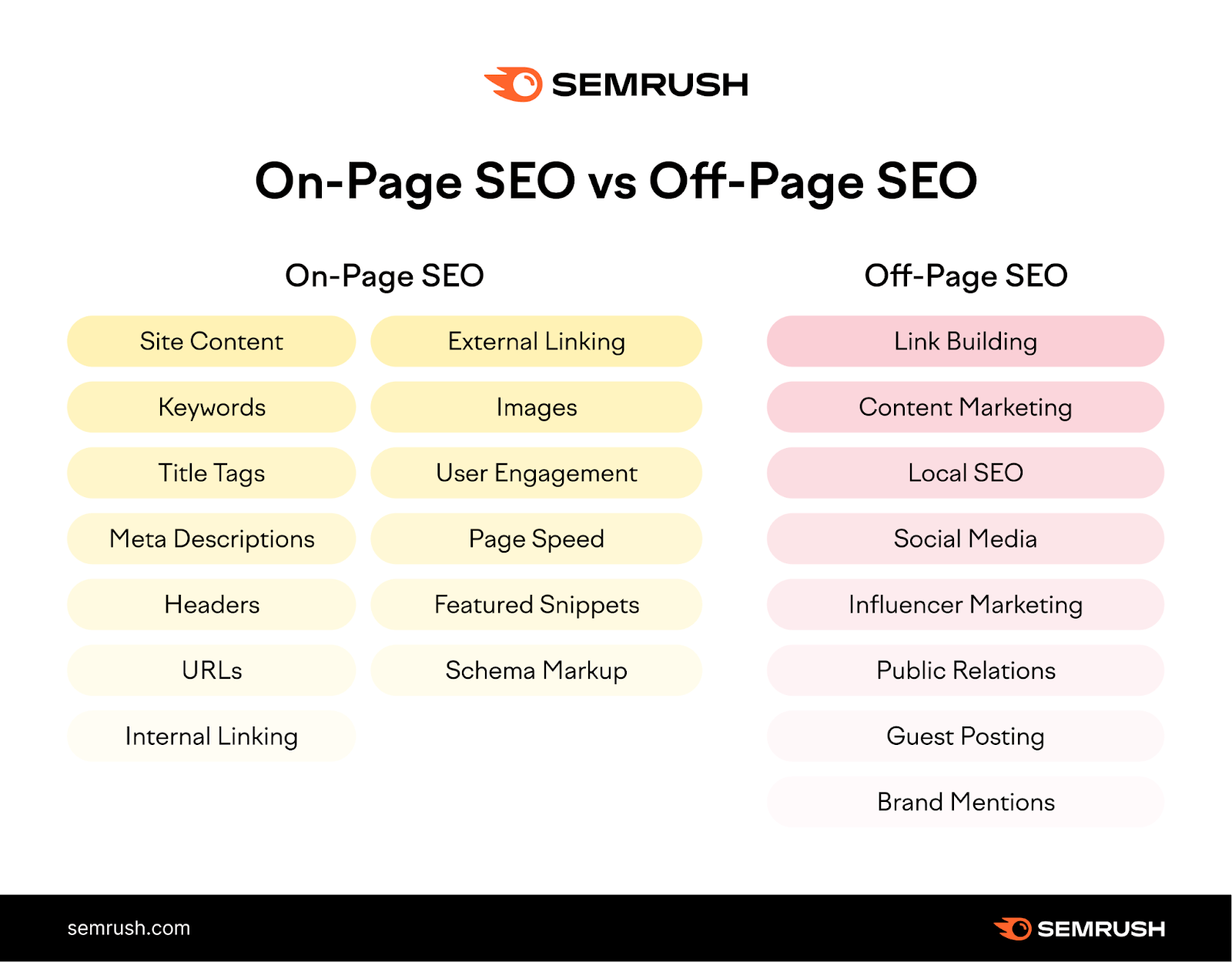
What Matters Most?
Creating high-quality, unique content that addresses customer pain points is essential. Clients often find that prioritising genuine value over mere keyword density results in better engagement and conversions. Moreover, uncovering critical gaps in your SEO strategy through thorough competitor analysis is a step that many firms tend to overlook. It’s also vital to stay updated on Google’s algorithm changes; neglecting this aspect can jeopardise hard-earned rankings and diminish online visibility.Get In Touch
Does SEO matter for B2B?
In the world of B2B, SEO is essential for driving organic traffic and creating opportunities for business growth. Without it, you risk losing out on substantial traffic and potential leads. Consider these staggering statistics:
- 8.5 billion searches occur on Google daily.
- Approximately 99,000 searches take place every second.
While many of these searches might not directly relate to your industry, there are still vast opportunities to reach decision-makers searching for your specific products or services. Research shows that 89% of B2B buyers conduct thorough online research before engaging with a company, with most starting their search on engines like Google. This underscores the importance of implementing B2B SEO strategies to capture that traffic at critical moments of the buyer’s journey.
Boosting Visibility and Brand Awareness
Visibility and brand exposure are essential for any B2B company looking to secure long-term growth. Research indicates that a prospect needs to encounter your business at least 12 times before they visit your website. If your website isn’t ranking for the right keywords on the first page of search results, you’re inevitably losing business to competitors who are.
- 28.5% of users click on the first search result.
- Only 2.5% click on the 10th result.
- Very few users venture to the second page.
With the right organic SEO strategies, you can vastly improve your ranking and visibility, ensuring that your business appears in front of potential clients at the right time.
Targeted Lead Generation and Higher Conversion Rates
One of the most significant advantages of B2B SEO strategies is the ability to drive targeted traffic. When done correctly, you can attract potential leads who are already interested in what your business offers. For instance, if you sell enterprise software, it’s more effective to rank for software-related keywords rather than irrelevant ones like gardening terms.
Effective B2B SEO strategies allow you to engage leads at every stage of their buying journey and convert them at a much higher rate by aligning your content with their search intent.
Outranking Competitors and Gaining Market Share
Implementing strategic B2B SEO best practices can help you gain a competitive edge by improving your search rankings. When your business appears higher in search results than your competitors, you stand a better chance of capturing market share.
The top Google search results enjoy the following click-through rates:
- First position: 28.5% average CTR.
- Second position: 15% average CTR.
- Third position: 11% average CTR.
By focusing on B2B SEO strategies, your business can secure these top spots, diverting more traffic away from your competitors and increasing both visibility and sales. Embracing the right mix of organic SEO strategies and B2B organic growth strategies ensures long-term growth and resilience in an increasingly competitive market.
What is the difference between B2B & B2C SEO?
At a glance, B2B and B2C SEO share a fundamental objective: to ensure that your business appears when potential customers search for relevant products or services. However, while the end goal might be the same, the strategies required to achieve it differ significantly. B2B SEO strategies must take into account the complexities of longer sales cycles, different buyer intent, and more focused content compared to B2C. Let’s examine four key differences between B2B SEO strategies and their B2C counterparts.
1. Extended Sales Cycle and Decision-Making Process
The B2B marketing funnel is structurally similar to that of B2C, but the timeline is much longer. In B2B, decision-makers spend considerable time in the research phase, carefully evaluating various options. Unlike B2C consumers, who may make quicker purchasing decisions, B2B buyers require comprehensive information to guide them through each stage of the decision-making process. There’s often substantial back-and-forth between the buyer and seller, as the prospective client digs into case studies, watches product demonstrations, and negotiates contract terms. To keep potential clients engaged, it’s essential to develop content tailored to each stage of the funnel—whether it’s educational blog posts for the awareness stage or in-depth white papers for the consideration stage.
2. Targeting Niche and Long-Tail Keywords
Another distinction lies in how B2B SEO strategies approach keyword targeting. In B2C SEO, there’s a strong emphasis on high-volume, common search terms that cater to a broader audience. B2B SEO, on the other hand, often relies on niche and long-tail keywords that attract a smaller, but highly targeted, group of searchers. These users tend to have specific needs and are further along in the buyer’s journey, making them more valuable leads. For example, while a B2C brand might focus on ranking for general terms like “what is a chatbot,” a B2B business would prioritise low-volume yet highly targeted keywords such as “customer service chatbot integration” to capture more qualified traffic.
In this scenario, a B2B buyer might be exploring how chatbot solutions can enhance customer service within their organisation. Targeting this specific query with organic SEO strategies not only positions your brand as an expert in the field but also aligns your content with the searcher’s intent, increasing the likelihood of conversion.
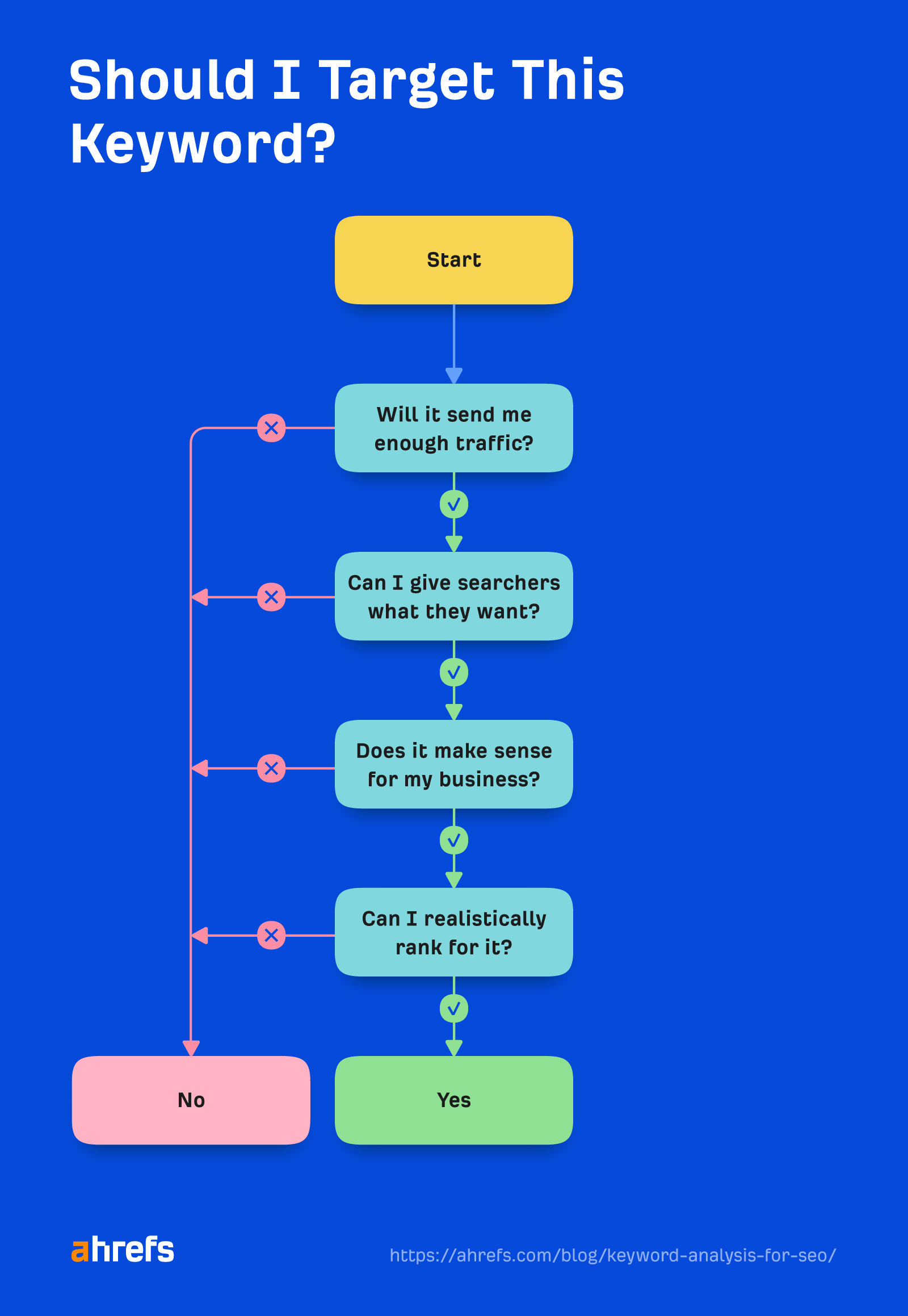
3. Lower Conversion Rates but Higher Value Leads
Due to the nature of the B2B SEO strategies that focus on long-term engagement and high-value relationships, the conversion rate is often lower compared to B2C. However, what B2B businesses lack in immediate conversions, they make up for in the quality of leads generated. A B2B decision-maker might consume a large amount of content over several weeks or even months before making a final purchase decision. This makes it imperative for B2B marketers to create a variety of content types—ranging from blog posts to detailed eBooks—that provide value at every touchpoint.
How to create a winning B2B SEO strategy
Perform a Comprehensive Technical SEO Audit
Before making any additions or changes to your site, it’s crucial to carry out a detailed technical SEO audit. This process allows you to identify quick fixes and areas that require more significant attention. A well-executed audit forms the foundation for any B2B SEO strategies aimed at boosting your site’s performance and visibility.
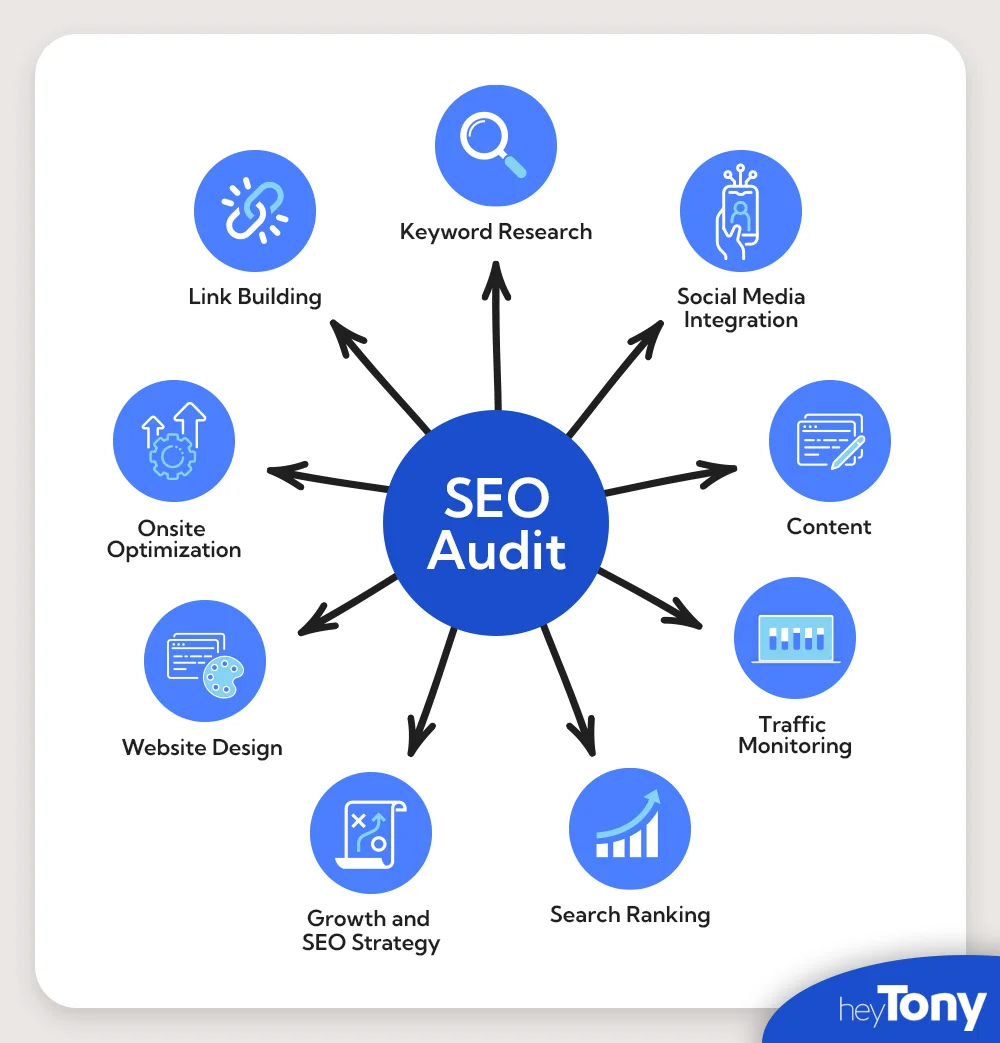
Here’s a breakdown of the key elements to review during your audit:
1. Check for 404 Errors and Broken Links
Uncovering and fixing broken links is a critical step in your audit. Although Google doesn’t penalise your site directly for having broken links, they can negatively impact your rankings due to the higher bounce rates they cause. A high bounce rate signals to search engines that users are leaving your site because they’re not finding what they expected.
By using tools like Google Search Console, you can quickly identify broken links and repair them to avoid any damage to your organic SEO strategies.
2. Audit Your XML Sitemap
Your XML sitemap plays an essential role in helping search engines crawl and index your site more effectively. A thorough sitemap audit ensures that search engines are being provided with the correct structure and updates about your content.
An optimised XML sitemap gives search engines crucial details, such as:
- When each page was last modified.
- The priority level of each page on your site.
- How frequently your content is updated.
By keeping your sitemap up to date, you’ll ensure that your B2B SEO strategies align with search engines’ expectations, improving the likelihood of your content being indexed accurately.
3. Double-Check Analytics Tracking
Data-driven decision-making is at the heart of any successful B2B SEO best practices. It’s vital to ensure that your analytics platforms are correctly tracking real-time information about your site’s performance and rankings. Without accurate data, you could be missing out on valuable insights that drive optimisation efforts.
Make sure your analytics tools—whether Google Analytics, Google Search Console, or Bing Webmaster Tools—are properly configured and providing you with accurate information. These platforms can help you:
- Monitor mobile usability.
- View backlinks to your site.
- Disavow harmful or spammy links.
4. Verify HTTPS Security
Since 2014, Google has prioritised HTTPS-secured websites in search rankings, meaning that securing your site with an SSL certificate is no longer optional. Websites without HTTPS can be viewed as less trustworthy, both by users and search engines, resulting in lower rankings.
Ensure that your site is secured with HTTPS to comply with modern B2B SEO best practices. This is a simple yet essential step to boost your site’s security and credibility.
5. Review Core Web Vitals
One of Google’s more recent algorithm updates introduced Core Web Vitals, a set of performance metrics that measure user experience. These signals became a ranking factor in 2021, making it imperative to monitor and optimise them.
The three key metrics are:
- Largest Contentful Paint (LCP): Measures how long it takes for the largest content element (like an image or block of text) on a page to load.
- First Input Delay (FID): Tracks the time between a user’s first interaction with your site and when the browser responds to that action.
- Cumulative Layout Shift (CLS): Assesses how much the layout shifts unexpectedly as users interact with your site.
By improving these Core Web Vitals, you not only enhance your site’s ranking but also improve the overall user experience—an essential aspect of any effective B2B organic growth strategy.
6. Strengthen Internal Linking
Internal linking is a powerful, often underutilised technique within organic SEO strategies. By strategically placing internal links across your pages, you help search engines better understand the relevance of your content, while guiding users to important resources within your site. This not only boosts visibility but also improves your site’s user experience, contributing to higher rankings.
Internal links indicate to search engines that the content on your site is valuable, connected, and worth ranking higher. Incorporating these links thoughtfully can significantly enhance the effectiveness of your B2B SEO strategies.
Perform Keyword Research
Keyword research is the cornerstone of any successful B2B SEO strategy, enabling businesses to understand exactly how many people are searching for a specific term and what phrases are most relevant to their target audience. Once you have a clear picture of what your buyer personas are searching for, you can align your keyword strategy to match their needs more precisely.
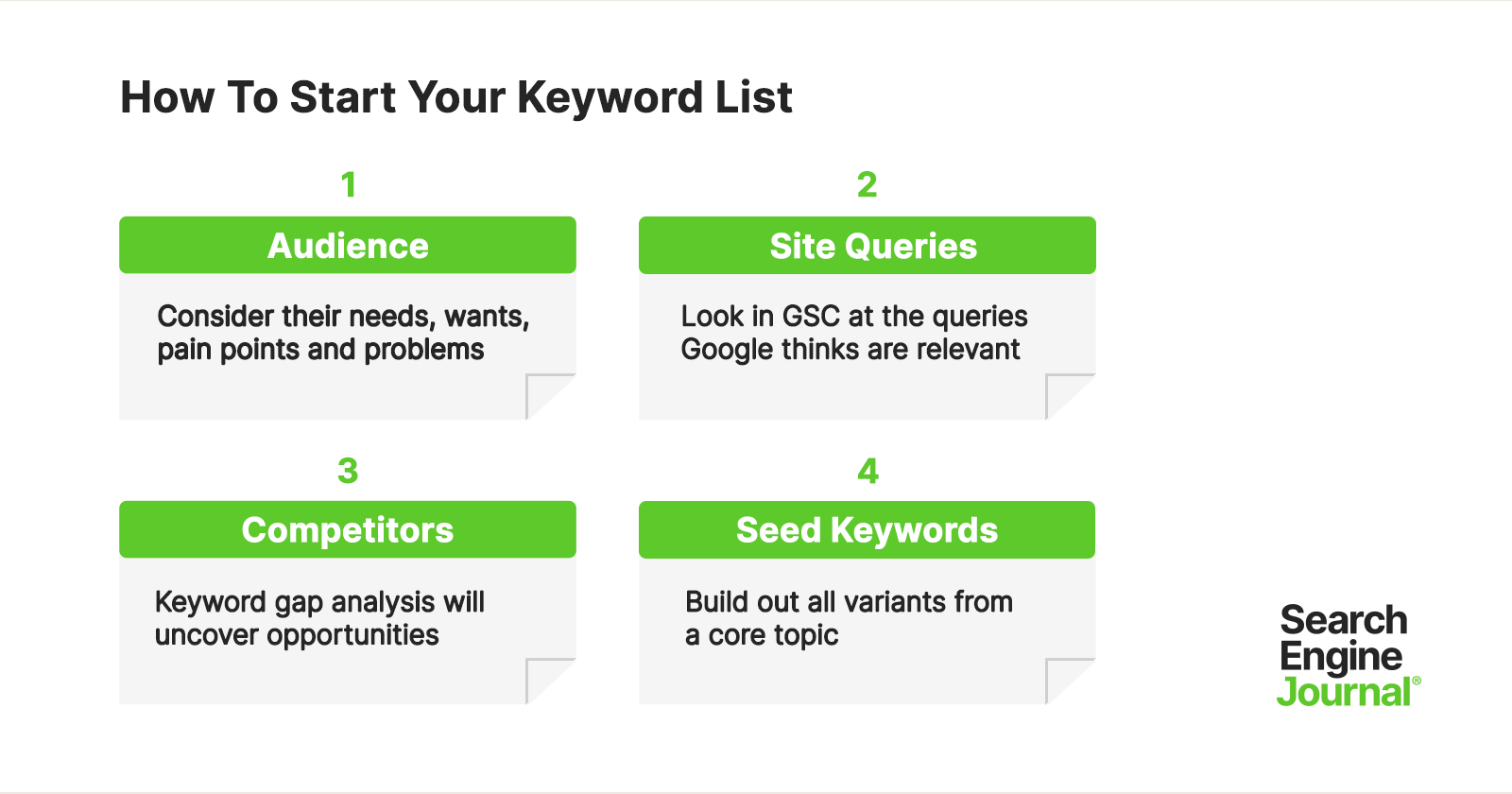
However, effective keyword research goes beyond traditional search engines. It should also include social listening—monitoring online discussions on platforms like LinkedIn—to understand what your audience is talking about in real-time. By adapting your content and website to reflect your audience’s actual interests, you may see a reduction in search volume, but the traffic you do attract will be much more valuable and targeted, driving long-term B2B organic growth strategies.
Utilising a keyword tool is essential to generate data-driven ideas. Google Ads Keyword Planner is an excellent option, as it provides insight into the popularity and competition levels for particular search terms. Other powerful tools that can support your B2B SEO strategies include:
- Spyfu
- WordStream
- SEMRush
- Ubersuggest
- Ahrefs
Source: Gartner
Competitor Analysis
An in-depth competitive analysis is an invaluable part of optimising your B2B SEO best practices. It allows you to identify key market players, assess their strengths, and pinpoint gaps your business can exploit to outperform them. With this knowledge, you can develop a data-driven approach that positions your business ahead of competitors, attracting a loyal customer base.
Several research tools enable you to gather up-to-date competitive intelligence, revealing how your competitors rank and what keywords they target. Key tools and methods include:
- Social media: Use features like “Pages to Watch” or integrate social media analytics tools to track competitor activity.
- Search Engine Results Pages (SERPs): Tools like Ahrefs and SEMRush analyse the keywords your competitors are ranking for and how they acquire backlinks to boost visibility.
- Online Coverage: Set Google Alerts for competitor brand names to track media mentions and influencer engagement.
- Traffic Volume and Sources: Platforms like SimilarWeb provide free analytics, offering insights into website traffic and referral sources.
Create Topic Clusters and Pillars
A strong B2B SEO strategy often involves creating topic clusters and pillar pages, which help to structure your content and boost search engine visibility. Understanding the distinction between pillar and cluster pages is crucial:
- Pillar Page: This is a long-form, comprehensive piece of content that serves as the foundation for a particular topic—examples include white papers, eBooks, or in-depth guides. The pillar page acts as the central hub for all related content.
- Cluster Page: Each cluster page focuses on a specific keyword related to the pillar page. These are shorter, more specific articles that dive into individual aspects of the pillar topic and are connected through internal linking.
By developing pillar and cluster content, you create a web of interconnected pages that help search engines discover and rank your content more effectively. This method plays a key role in organic SEO strategies, allowing you to cover a topic comprehensively and drive more relevant traffic to your site.
Content Development
Once your technical SEO elements are optimised, the next step in building robust B2B SEO strategies is content development. In the digital marketing world, content truly is king, and for B2B companies, creating high-quality, informative content is essential for long-term success.
Landing Page Content
Landing pages must be optimised around specific keyword clusters to effectively communicate your company’s value proposition to your target audience. These pages inform potential customers about your products, services, and unique selling points, and they should be tailored to specific B2B SEO best practices.
To optimise landing page content, follow these key steps:
- Identify the keyword cluster: Choose a mix of industry-specific and landing page keywords that reflect the intent behind each search query. For instance, if you’re optimising a page for logistics management software, you’ll want to include industry-related terms like “logistics management,” “B2B logistics management,” and product-specific phrases such as “logistics management software” and “best logistics software.”
- Content depth: Ensure the landing page content offers detailed information about the subject, addressing the search intent behind each targeted keyword. For example, if a user searches for “how to use logistics management software,” the page should provide step-by-step guidance on using the software.
- Keyword distribution: Incorporate keywords naturally throughout the content. Primary keywords should appear in the title and headers to increase relevance. Distribute secondary keywords evenly to avoid keyword stuffing and maintain readability.
- Content segmentation: Divide content into sections for improved readability. Utilising subheadings, bullet points, and concise paragraphs will make the content easier to digest while also supporting your organic SEO strategies.
By creating original, keyword-optimised content that aligns with both user intent and B2B SEO best practices, you set your business up for sustained growth, driving higher traffic and better conversion rates.
Our Tactical Recommendations
From our experience, significant engagement and support for link-building efforts can be achieved by leveraging visual content and infographics, yet many clients underutilise this approach. Often overlooked, optimising for local SEO in B2B contexts typically leads to improved visibility and results. Additionally, focusing on featured snippets and rich results is a tactic frequently neglected that can greatly enhance search visibility.Get In Touch
What is the Best Boilerplate SEO Strategy?
Boilerplate SEO refers to creating a foundational structure that ensures your website adheres to the basic principles of search engine optimisation (SEO). It’s a set of essential elements designed to help site owners grasp and apply the fundamentals of SEO effectively. These elements typically include optimising title and meta tags, conducting keyword research, ensuring high-quality content, and paying attention to technical aspects like page load speed and mobile optimisation.
How Google Handles Boilerplate Content
Google approaches boilerplate content with caution. In some cases, Google may ignore repetitive boilerplate elements—such as “Contact Us” pages—if they don’t provide meaningful content beyond what is standard.
That said, links associated with boilerplate content can still be indexed, although the quality of the indexing can vary depending on Google’s assessment of the page. In some cases, links may be flagged as paid or irrelevant. However, when used correctly, boilerplate content can serve a purpose, helping search engine bots understand the structure and intent of your site. This can help with SEO aspects such as identifying duplicate content issues and supporting public relations (PR) flow.
10 Practical Examples of Boilerplates in SEO
- Title and Meta Description Boilerplate: A template to craft SEO-optimised title and meta description tags for every page.
- Keyword Boilerplate: A template that integrates relevant keywords naturally throughout the content to ensure they are indexed by search engines.
- Header Boilerplate: A template for structuring content using header tags (H1, H2, H3, etc.), which improves readability and search engine ranking.
- Canonical Tag Boilerplate: A template for adding canonical tags that signal the main URL for a piece of content, preventing duplicate content penalties.
- XML Sitemap Boilerplate: A template for generating an XML sitemap, ensuring that search engines can discover and index every page on your website.
- Robots.txt Boilerplate: A template for creating a robots.txt file to inform search engines which pages should not be indexed.
- Social Media Sharing Boilerplate: A template for integrating social media sharing buttons, encouraging users to share your content across platforms.
- Alt Text Boilerplate: A template to ensure all images have alt text, aiding search engines in understanding and indexing your visual content.
- Responsive Design Boilerplate: A template for creating mobile-friendly websites that work seamlessly across all devices.
- Schema Markup Boilerplate: A template for using schema markup, which helps search engines better interpret and display your content in search results.
Best Practices for Using Boilerplate SEO Strategies
To ensure your B2B SEO strategies remain effective, it’s important to follow a set of best practices when developing your boilerplate content.
Do’s for Boilerplate SEO
- DO Collect and Reuse Previously Written Material: Over time, your boilerplate content may need updates. However, you don’t need to start from scratch each time. Reuse commonly repeated information found in press releases or keyword trends to create accurate and up-to-date boilerplate material.
- DO Include Your Tagline: Your business tagline and the primary keywords you aim to rank for should be incorporated into the boilerplate. This reinforces your brand message and SEO objectives. If you don’t have a tagline, consider using a tagline generator to craft one that aligns with your brand.
- DO Stick to a Single Point of View: Consistency is key. Choose either first or third-person narrative and stick to it. This creates a smoother reading experience and ensures the narrative flows logically throughout the content.
- DO Use Current Terminology: Make sure your boilerplate reflects the latest terminology in your industry. Using outdated terms can make your business appear behind the times, which may harm your credibility and ranking potential.
- DO Include Relevant Links and Social Handles: Make it easy for users to find and follow your brand across platforms. Include social media links or handles at the end of your boilerplate to encourage engagement beyond your website.
Don’ts for Boilerplate SEO
- DON’T Overload with Jargon: While you want to demonstrate expertise, avoid filling your boilerplate with industry jargon that may confuse readers. Focus on clear, accessible language that appeals to a broad audience without sacrificing the specificity needed for effective B2B SEO strategies.
- DON’T Forget to Update Regularly: As your business evolves, so should your boilerplate. Ensure it stays current with market trends, keyword shifts, and any changes in your service offerings.
The Best SEO Tools for 2024
Selecting the right SEO tools can be challenging given the range of categories they cover. From keyword analysis to performance reporting, each tool needs to specialise in an essential aspect of search engine optimisation to deliver value. In reviewing the best options, I’ve identified key criteria that make these tools stand out, providing businesses with the best possible B2B SEO strategies to drive success.
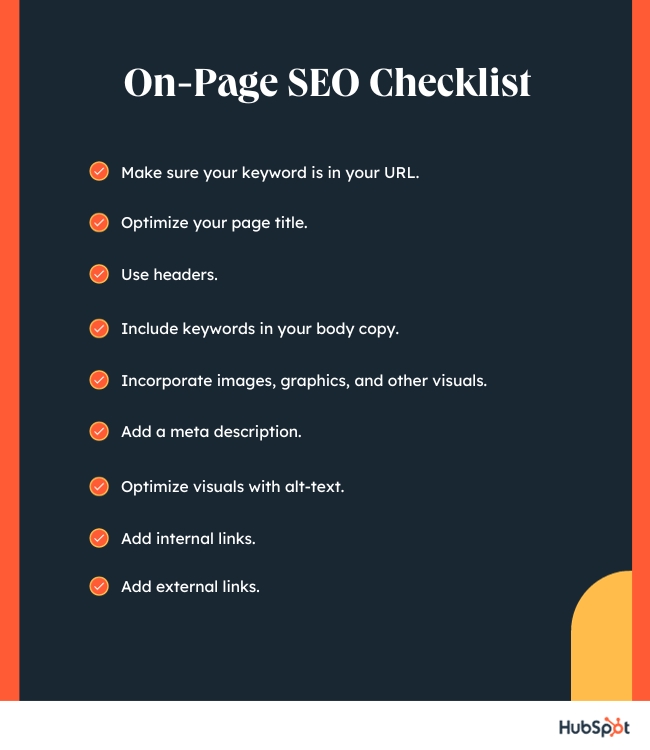
What Makes a Great SEO Tool?
To ensure objectivity in assessing the value of different SEO tools, several factors must be considered:
- SEO-Centric Functionality: The tool must excel in one or more areas of SEO, such as keyword research, content optimisation, on-page performance analysis, or competitor analysis. Each tool should align with specific organic SEO strategies, offering solutions that enhance website performance and search rankings.
- Value for Money: Price should directly correlate with the tool’s capabilities. Tools with niche functions must offer enough efficiency to justify their cost, while comprehensive tools should provide a broad feature set that stands out compared to free alternatives.
- User Experience: The best SEO tools should be easy to use, even for those with minimal experience. A steep learning curve can hinder effective utilisation, so intuitive tools that allow quick access to features are crucial.
- Integration Capabilities: Most businesses rely on a variety of software tools. Therefore, your SEO tool must integrate smoothly with other platforms such as CRM systems, reporting software, and project management tools, allowing for a seamless workflow.
Source: Sistrix
1. Google PageSpeed Insights
Function: Measure the speed and usability of your site across multiple devices.
Limitations: None
Google PageSpeed Insights enables you to enter a URL and receive a detailed report on its loading times and performance on both mobile and desktop. The tool scores your site from 0 to 100 based on performance metrics and offers actionable recommendations for improvement, making it an invaluable part of your B2B SEO best practices.
Alternatives: Pingdom, WebPageTest, GTMetrix
2. Ahrefs Webmaster Tools
Function: Conduct a technical audit of your site.
Limitations: 10,000 crawl credits per project, per month.
Ahrefs Webmaster Tools allow you to perform an in-depth audit of your site, identifying more than 100 technical SEO issues. It provides suggestions to help you fix these problems and improve internal linking, boosting your website’s ranking in search results. Additionally, the tool enables you to track your site’s organic keyword rankings and see which sites are linking to yours.
Alternatives: Screaming Frog, Beam Us Up
3. Answer the Public
Function: Generate hundreds of keyword ideas from a single query.
Limitations: Three free searches per day (with an account).
Answer the Public generates a large list of long-tail keyword opportunities and commonly asked questions based on a single keyword input. This tool helps to identify highly specific phrases that can be incorporated into your B2B SEO strategies to target niche markets effectively.
Alternatives: KeywordTool.io, Ubersuggest, Keyword Sheeter, Keyword Generator
4. Google Analytics
Function: Track web traffic and gather search insights.
Limitations: None, although keyword traffic data is hidden.
Google Analytics is one of the most powerful free tools available for tracking website traffic. It provides insight into where your traffic is coming from, which pages are performing well, and how users are interacting with your site. However, it no longer shows which specific keywords are driving traffic to your site. To address this, you can pair it with tools like Keyword Hero to fill in the gaps in your organic SEO strategies.
Alternatives: Matomo, Open Web Analytics, Clicky
5. Google Search Console
Function: Monitor site performance and fix technical issues.
Limitations: Limited to 1,000 backlinks and 1,000 organic keywords.
Google Search Console provides critical insights into your website’s SEO health. It tracks metrics like clicks, impressions, and average ranking positions, enabling you to spot trends and resolve technical issues. Search Console also allows you to submit sitemaps, ensuring that search engines are aware of your site’s latest content. If you’re targeting other search engines, consider using Bing Webmaster Tools or Yandex Webmaster Tools for broader coverage.
Alternatives: Bing Webmaster Tools, Yandex Webmaster Tools
6. Ahrefs Backlink Checker
Function: Analyse backlinks and referral domains.
Limitations: Free version shows only the top 100 backlinks.
Ahrefs Backlink Checker is a robust tool for analysing the backlinks pointing to any website or URL. It reveals the total number of backlinks and referring domains, along with Domain and URL Ratings. This information is invaluable for identifying link-building opportunities and boosting your B2B SEO strategies.
Alternatives: Moz Link Explorer
